June 14, 2025 | 09:15 GMT +7
June 14, 2025 | 09:15 GMT +7
Hotline: 0913.378.918
June 14, 2025 | 09:15 GMT +7
Hotline: 0913.378.918
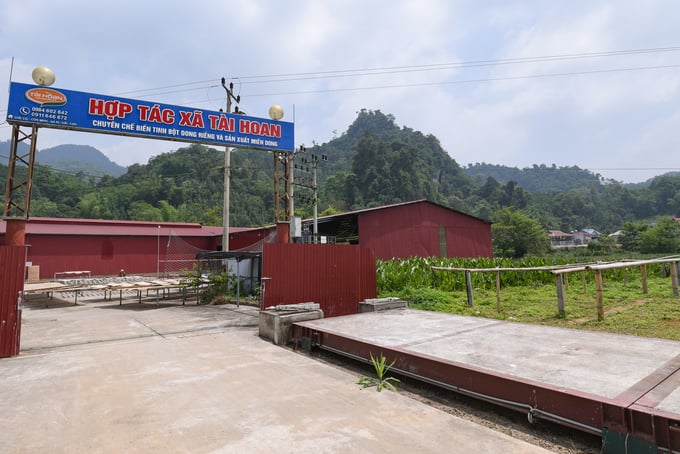
Tai Hoan Cooperative is located between the vast mountains of Na Ri, Bac Kan. Photo: Tung Dinh.
Na Ri is located in the east of Bac Kan, a somewhat isolated area. Traffic is mainly through 2 main routes, National Highway 3 and National Highway 279. With an average altitude of more than 550 m above sea level, this is a highland district full of hills and mountains, thus dividing villages into many separate regions.
From Bac Kan city to Na Ri, the most convenient way is to cross Ang Toong pass. The pass is only 20 km long but it still brings fear to drivers because of its steep slopes, many bends, and narrow visibility.
Perhaps due to such dangerous terrain, nature bestows Na Ri with both majestic mountain scenery and delicious products, like the red galangal. And perhaps the difficulties of this land have prompted people like Nguyen Thi Hoan to gather the determination and become rich right in their homeland by using its native agro-products.
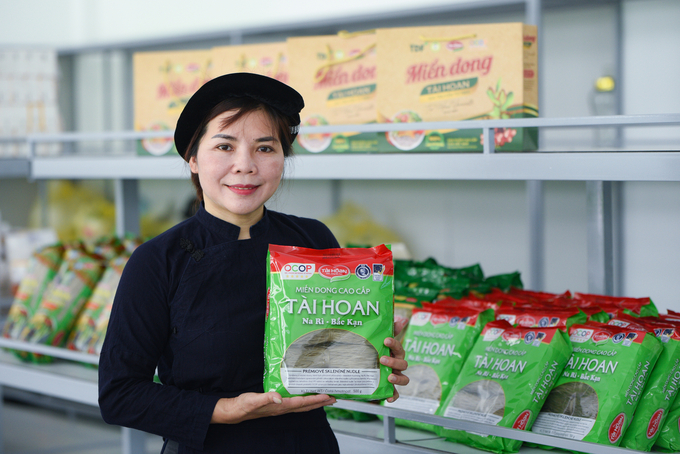
Nguyen Thi Hoan and her 5-star OCOP red galangal vermicelli product. Photo: Tung Dinh.
Knowing that the guests were coming, Hoan called early in the morning: "You guys just follow Road 3 to Con Minh commune, my cooperative is located right on the road. Just go and see the sign ‘Tai Hoan galangal vermicelli’ then come in. I'm at the factory this morning, so please call me when you arrive".
More than an hour later, the Tay woman already stood in front of the cooperative gate, waiting for the guests to finish putting the car close to the wall. As soon as the door was opened, she immediately invited us to come in for a drink.
Called it a cooperative, but this place should be considered a complex, with several thousand square meters wide including a factory, a drying area, a packing area, a warehouse, and a space to display sample products combined with a refreshment stop.
Small figure but very agile, the business owner sat down and talked, but sometimes she has to answer the phone to deliver goods or turned her head to return the greeting of customers coming to see the sample products.

5-star OCOP vermicelli products of Tai Hoan Cooperative. Photo: Tung Dinh.
She told us a story of the past. About half a century ago, Nguyen Thi Hoan was born in Na Ri in a poor family with 7 sisters. Although her father was the captain of the commune, poverty was inevitable at that time. Her family had too many children, and her childhood was filled with days without a belly full.
But all hardships were bound to pass, especially with an energetic and talented person like her. The house was close to the national highway, so when she was only in 4th grade, Hoan understood the art of trade. She started with the simplest thing: sticky rice and cooc mo cake (a typical dish of the Tay ethnic people). She sold to customers traveling by car along Road 3.
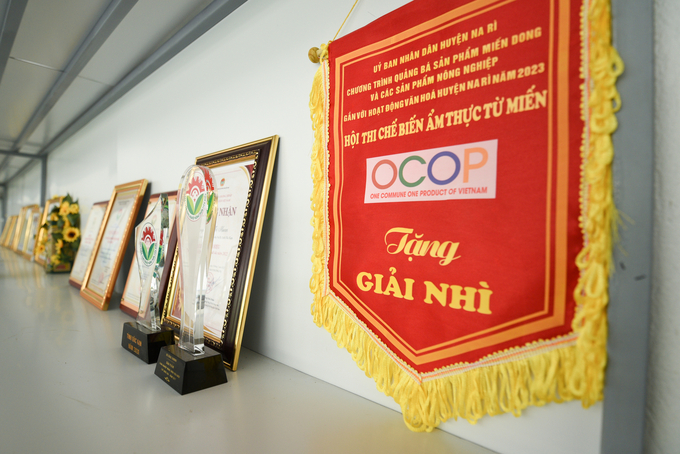
A series of certificates and awards of Tai Hoan Cooperative for their famous vermicelli products. Photo: Tung Dinh.
Galangal vermicelli binds the thread of fate
Red galangal is an endemic plant variety of Bac Kan in general and Na Ri in particular, often planted scatteredly on the hillsides and used as raw materials for hand-rolled vermicelli. Like many other people here, Hoan and her family have been making vermicelli since 1965, when red galangal was just some food to fight hunger.
Sticking with red galangal vermicelli from the early days until its value was recognized, the director of the 16-member cooperative determined to pursue the path of wealth with the previous generations’ traditional profession.
At that time, to meet production demands, Hoan hired 3 - 4 workers, both to help with housework and galangal processing. Even at peak times when harvesting, there were dozens of workers at home. Initially, the couple chose to focus on making galangal flour and selling it to vermicelli production facilities in the area because it was quicker to recover capital.
Four years later, when she had a fair amount of capital, Hoan bought the tools for making galangal papers. But everything was still manually operated. Daily productivity reaching 30 - 50 kg of vermicelli was already a lot at that time.
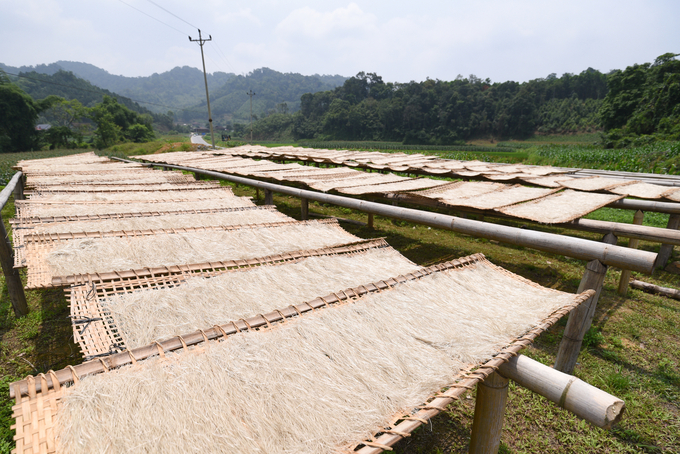
The vermicelli products of Tai Hoan Cooperative are 100% natural, with no preservatives. Photo: Tung Dinh.
Making delicious vermicelli was not enough. In business, the most important thing was still sales. When the whole village and commune worked together, there was no other way than to go further, knowing that, Hoan, alone with her motorbike, rode to any place she thought she could consume the products.
From Bac Kan, she went to Cao Bang and Lang Son to sell, even sending the products to big agents so that they could have a taste of it. The vermicelli was delicious, so gradually orders also came. The business was good, and the couple immediately thought of expanding the scale. So a large-scale vermicelli production line appeared. The productivity was pushed to 500 kg/day at peak.
Determined not only to get rich themselves but also to help local people, in 2018 the couple established Tai Hoan Cooperative to professionalize the vermicelli chain’s operations and expand its scale. Although the idea of establishing a cooperative also made the couple think back and forth, with the support of the district’s agricultural officials, they were able to gather the courage.
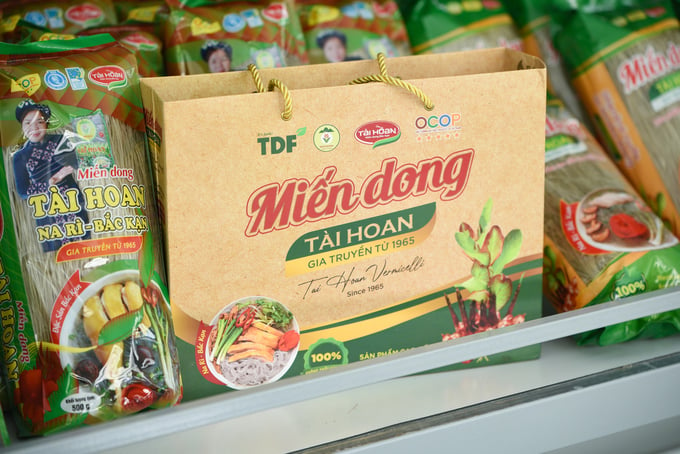
A product with impressive packaging of Tai Hoan Cooperative, suitable as a gift. Photo: Tung Dinh.
“My only wish is to see the product being known to more and more people. That’s my image of stable production, stable consumption. People's job is also stable, and many more people will get the opportunity. That's my biggest wish right now," Hoan said with a subtle voice.
Translated by Samuel Pham
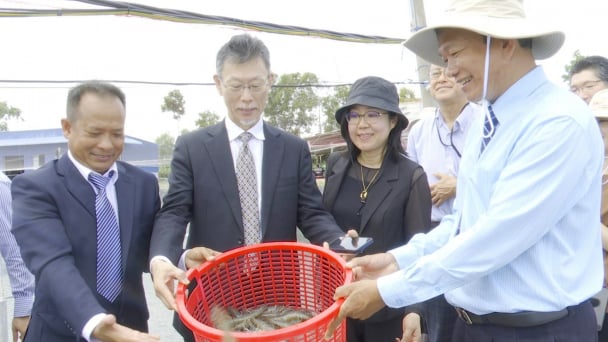
(VAN) In Tien Giang, a high-tech shrimp farm has developed a distinctive energy-saving farming model that has yielded promising results.
![Turning wind and rain into action: [3] 300.000 farmers benefit from agro-climatic bulletins](https://t.ex-cdn.com/nongnghiepmoitruong.vn/608w/files/news/2025/06/12/e5a48259d6a262fc3bb3-nongnghiep-125122.jpg)
(VAN) The agro-climatic bulletin has become a valuable tool for farmers in the Mekong Delta. After more than five years of implementation, the initiative is gradually being expanded nationwide.
![Turning wind and rain into action: [2] Providing forecasts to the people](https://t.ex-cdn.com/nongnghiepmoitruong.vn/608w/files/news/2025/06/12/e5a48259d6a262fc3bb3-nongnghiep-103927.jpg)
(VAN) In addition to improving the quality of hydrometeorological forecasts, putting forecast bulletins into practical use is crucial for production and disaster prevention.
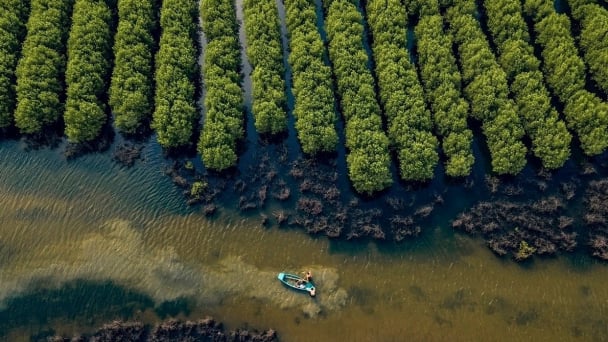
(VAN) Blue carbon is receiving attention for its rapid absorption capacity and vast potential. It represents a promising nature-based solution to respond to climate change.
/2025/06/11/3507-1-161904_583.jpg)
(VAN) Seagrass beds and coral reefs serve as 'cradles' that nurture life in the ocean depths, creating rich aquatic resources in Vietnamese waters.
![Turning wind and rain into action: [1] Forecasting for farmers](https://t.ex-cdn.com/nongnghiepmoitruong.vn/608w/files/news/2025/06/11/e5a48259d6a262fc3bb3-nongnghiep-111919.jpg)
(VAN) Weather is no longer just a matter of fate. Forecasts have now become an essential companion for farmers in every crop season.
/2025/06/10/2501-3-082025_983.jpg)
(VAN) Mr. Le Hoang Minh, Head of Vinamilk's Net Zero project, recently shared insights on the integration of production, energy, and technology in Vinamilk’s green transition journey.